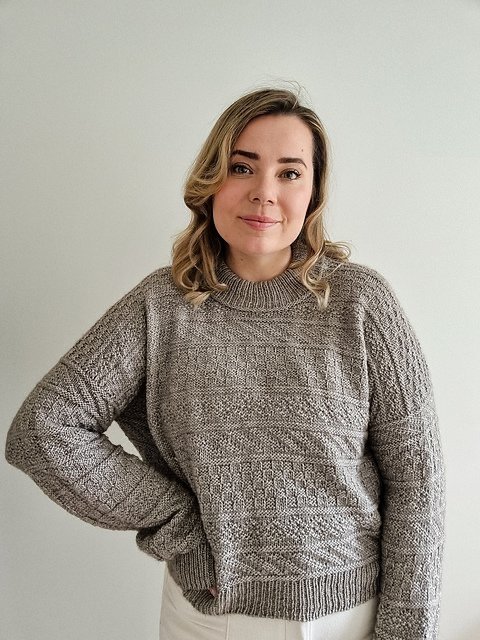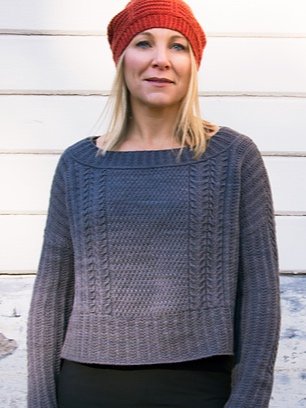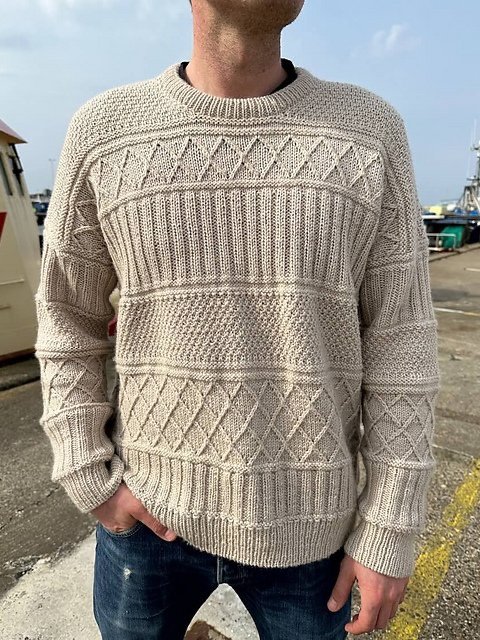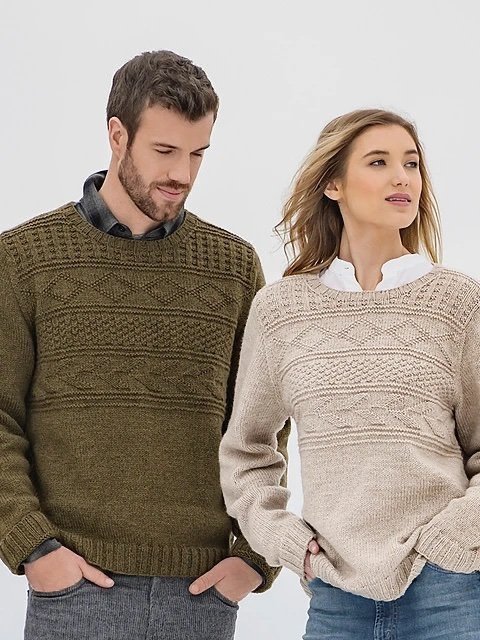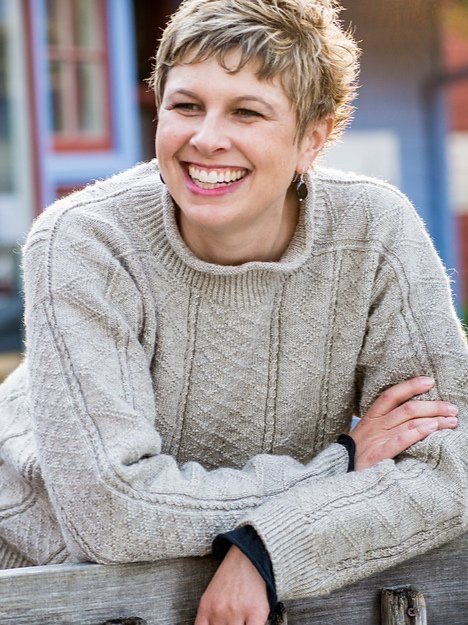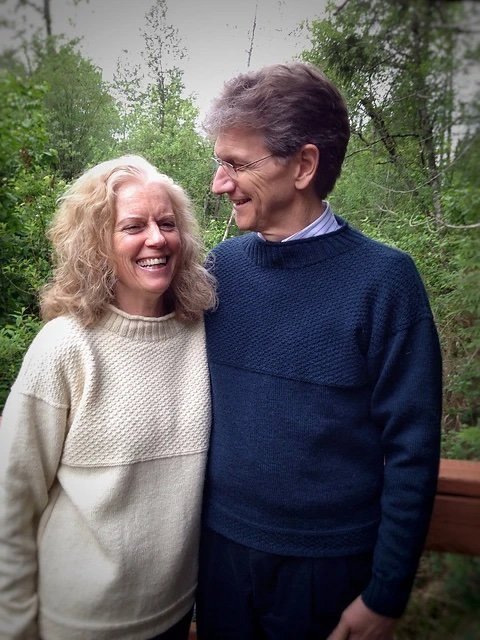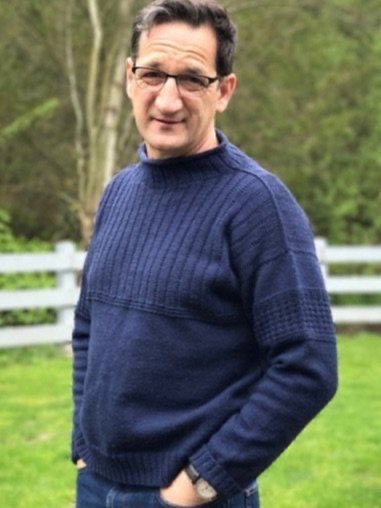Gansey, anyone?
The traditional Gansey is a hardwearing, weatherproof, hand-knitted garment for fishermen and sailors produced, mainly at home by both women and men, all along the UK coastline from the Channel Islands up to Scotland. The worsted-spun, 5ply wool yarn favoured for these garments was usually dyed a shade of dark blue. Knitted traditionally on five pins or ‘wires’ so as to be seamless and close fitting, the yarn was worked at a tight gauge for durability and protection, but it also gave excellent stitch definition for the textured patterns that have come to be associated with ganseys.
Ganseys from Guernsey itself were often plain but the stitch patterns tended to become more complex the further north the garment spread with the most complex of all evolving in the Scottish fishing villages. Patterns moved up and down to coast with the herring fleets and were memorised and passed down the generations within families.
The straight neckline of a traditional gansey allowed it to be worn either way round. The cuffs stopped short of the wrist to avoid catching on ropes or machinery. As the sleeves were knitted down from armpit to cuff, it was possible to pull them back and reknit them when the cuffs or elbows wore out.
Rarely washed, most fishermen would have had a Sunday-best gansey as well as their work wear, no doubt a relief to whoever sat next to them in church!
Now worn as much for leisure as for work, traditional textured gansey stitch patterns continue to offer a valuable source of inspiration for knitters and designers.
As well as updated versions of the traditional designs, many modern interpretations are now available for those who want to make a garment that pays tribute to this important part of our knitting heritage but reflects the needs of modern life and contemporary taste.
Guernsey yarn is very adaptable. It's capable of producing a fabric that will withstand the elements when knitted at a fine gauge but it also works well on larger needles to produce a more flexible fabric with a good drape which still offers excellent stitch definition that will reward the effort put into all those cables and motifs.
Here are a few designs written for DK yarns that you may also be able to work in Guernsey yarn and which clearly show some gansey inspiration. Just be sure to swatch carefully before you jump in with both needles to make sure you like the fabric you make and the end result is going to fit.
From left to right: Alvar by Sari Norlund, Clio by Elizabeth Doherty, Ingrid Sweater (Man) by Petite Knit and Pemberton Pullover by Bobbi IntVeld. All are available as Ravelry downloads.
But if you are wanting something more traditional, Here are a few suggestions:
For a gansey with a buttoned neck and three-quarter length sleeves, take a look at the Moray Firth Gansey Project website and their Beatrice Gansey pattern shown above on the mannequin in white yarn.
From our inland waterways comes the Traditional Leeds Liverpool Canal Gansey pattern based on a gansey knitted in the 1930s by a woman from Bootle, England.
This gansey is worked flat in pieces so would be an option for anyone who finds working the whole garment in one piece too heavy or too daunting.
Available as downloads from Ravelry are the patterns shown below from left to right:
Newhaven (right) by Beth Brown-Reinsel is also available on Ravelry. It is from her book Knitting Ganseys, Revised and Updated: Techniques and Patterns for Traditional Sweaters which is currently out of print, but if you can get hold of a copy there are several other lovely designs in it which are not currently available as downloads.
The Gansey Girl (left) immortalises the tradition of Gansey knitting in bronze. Situated on the harbour in Bridlington, with Flamborough Head in the background, the statue, created by Steve Carvill, depicts a fisherman’s wife knitting a Gansey.
This labour of love may no longer be a necessity but the tradition is still alive and still worth pursuing. A gansey has the potential to last a lifetime and there are not many things we knit that we can say that about!



